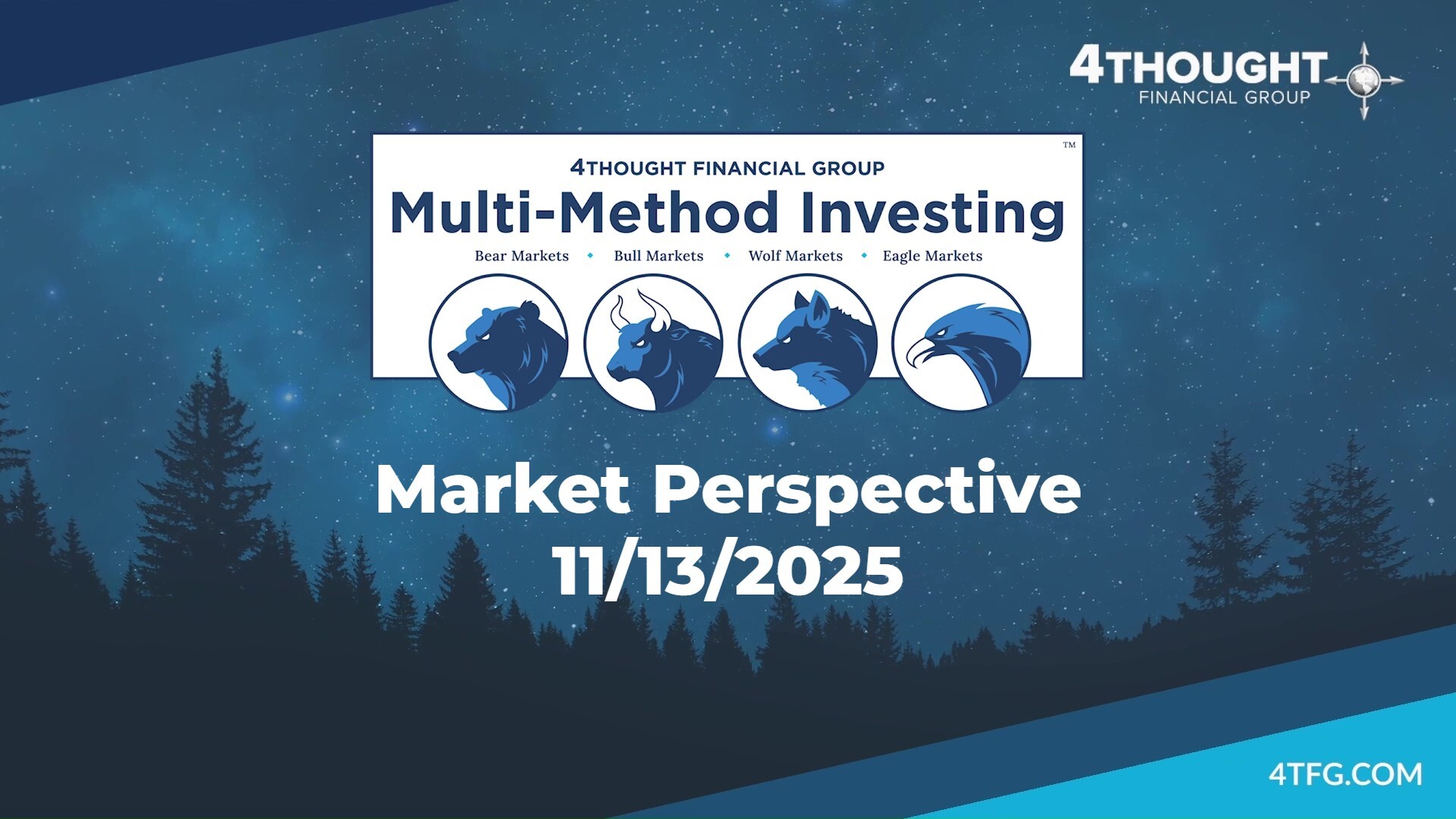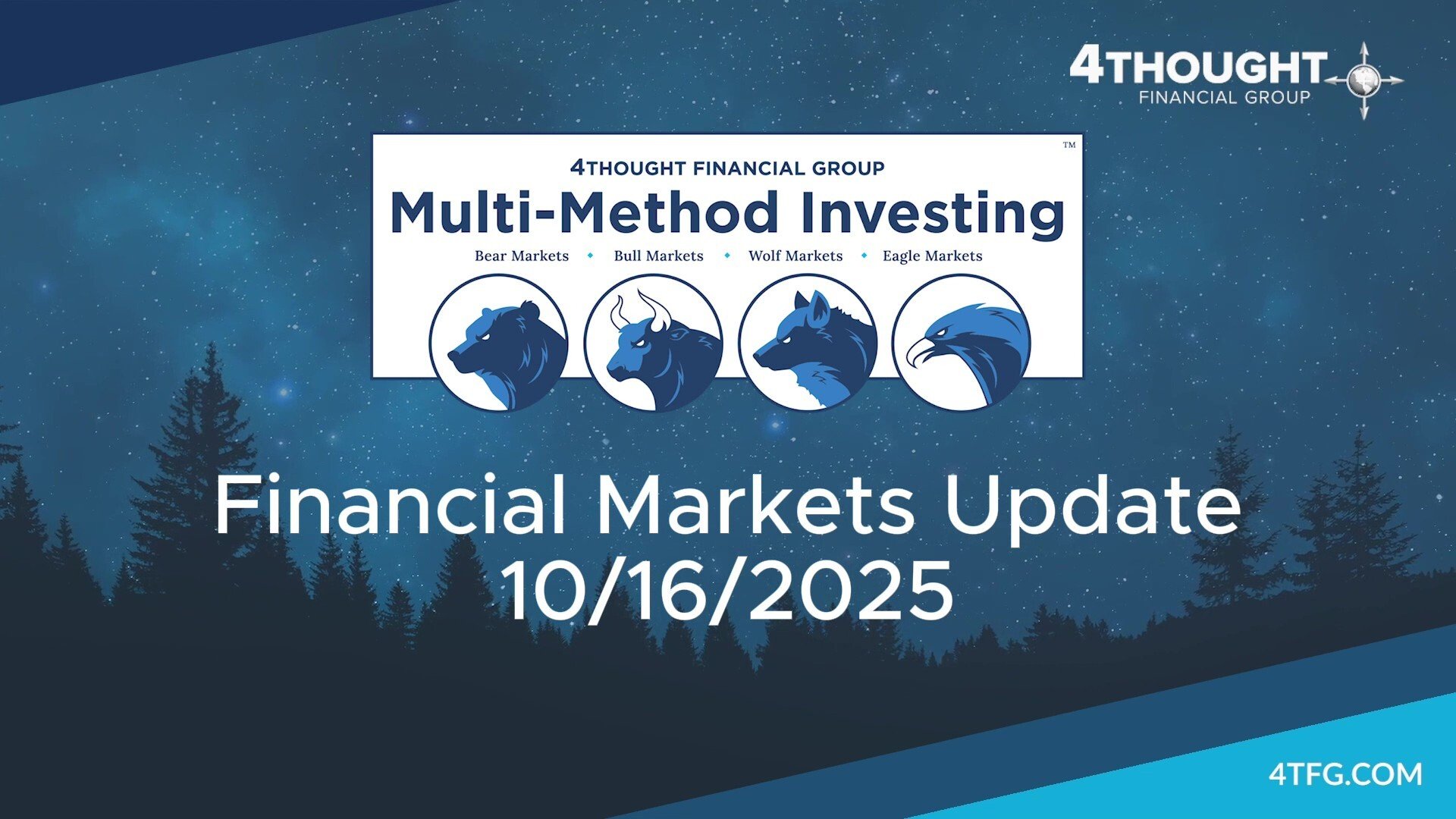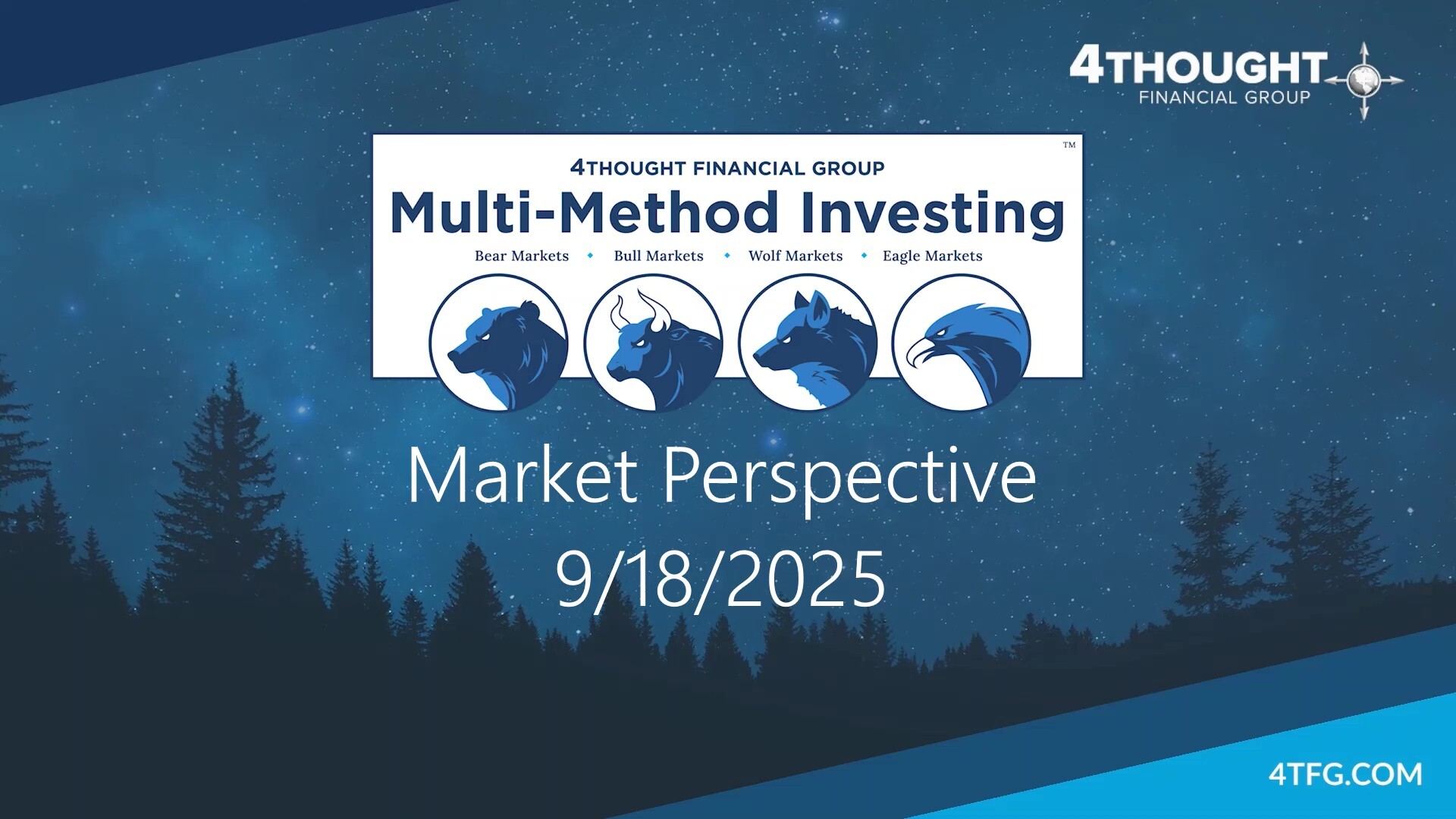4Thought provides you with actionable investment analysis and perspective on the financial markets.
Contact us to determine whether any ideas presented are applicable to your situation before taking any actions with regards to your financial plan or investment portfolio.
Hear from Chief Investment Officer Jesse Mackey in this week's Quant Market Perspective.
VIDEO TRANSCRIPT:
I’m Jesse Mackey, CIO of 4Thought Financial Group, and this is 4Thought’s Quant Market Perspective as of May 31st, 2022.
On Friday, May 20th, the S&P 500 (Price Return) Index reached a new maximum intraday draw-down of 20.93% from its January 4th peak price, confirming that the index had been in a Bear market since the recent peak based on the technical (intraday) definition. However, it has already bounced off this low with fervor, and now sits only 13.7% below the record as of the close of business on Friday. The indication of a Bear market has significant implications for portfolio management strategy relative to our previous base case, which was a higher likelihood that the correction that was first registered on January 24th would remain only a correction of less than 20% before resuming the previous bull market. The base case has not come to pass. Instead the lower probability scenario (by historical standards) of a confirmed Bear market has emerged.
The history of the S&P 500 index since 1950 reveals that once Bear markets have been identified (in which a 20%+ decline from a record peak has occurred), they have continued for an average of an additional 4.61 months and have experienced an average additional cumulative loss of 16.56% until the trough is reached. However, six out of thirteen instances of a Bear turned around within 1 month after it was indicated (some as early as the same day), while all others lasted longer (up to a maximum of 1.63 years). Such data calls for aggressive deployment of cash and other conservative instruments into stocks (and bonds in this case) both immediately and in the months following confirmation of a new Bear market, for long term investors that can afford to wait until a later upturn in the market cycle. One example of how long term investors can take action is to immediately deploy 50% of any idle cash (not needed for short term liquidity or expected upcoming spending) into their diversified managed account portfolio, with the remaining 50% split into 4 equal installments of 12.5% each, to be deployed each month for the next 4 months. This should be discussed with your advisor to confirm appropriateness for your situation before taking action.
Based on analysis of the complete historical market type data set using our Multi-Method Adaptive algorithmic process, we are now allowing overweight allocations to Strategic Asset Allocation, and underweights to Liability-Driven Investing, Opportunistic Investing and Selective/Concentrated Investing.
From a probabilistic analysis perspective, valuations tell a story that's positive for most stock types, but even more favorable for some bond types. On this basis, most stock types are now slightly to moderately undervalued. Bonds range from slightly undervalued (in the case of Treasury Inflation Protected Securities) to significantly undervalued (in the case of investment grade corporate bonds). Investment grade corporate bonds now reflect the most attractive pricing relative to the alternatives, while US large cap stocks are the least attractive. Emerging markets stocks are now the worst performing publicly traded broad asset type so far this year, while US Short Term Bonds have been the best (despite their own negative returns).
Against this backdrop the outlook for stocks is now significantly positive in the intermediate term based on the overall aggregate of our historical market-type data analysis and quantitative probabilistic analysis.
I hope this was helpful. If you have questions or you’d like to discuss what this means for your particular situation, please contact 4Thought at 516-300-1617 or at info@4tfg.com – and don’t forget to subscribe to our blog feed and our YouTube channel. Thanks for watching, and see you next week.






Leave a Comment